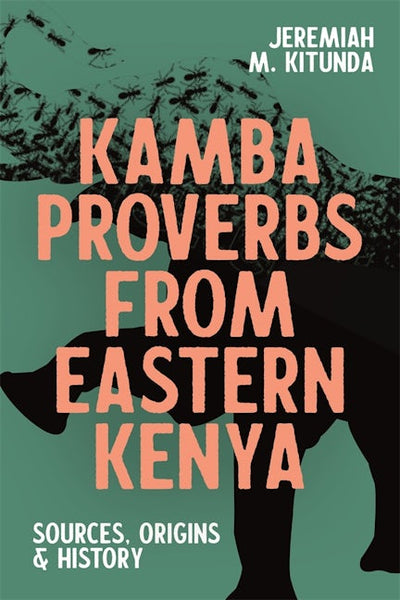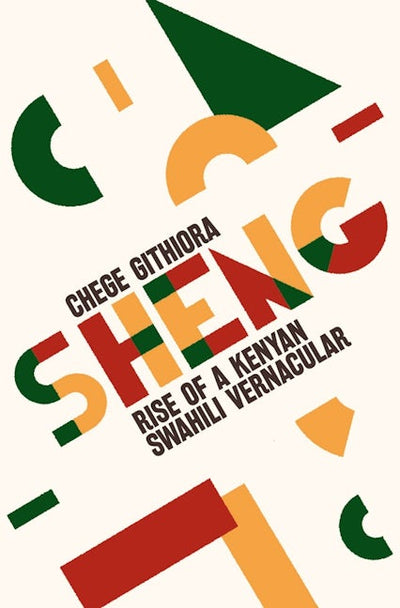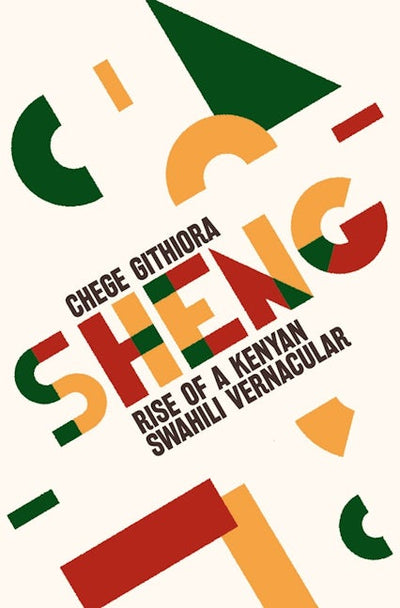Filter
-
Antiques & Collectibles
-
Architecture
-
Art
-
Bibles
-
Biography & Autobiography
-
Body, Mind & Spirit
-
Business & Economics
-
Comics & Graphic Novels
-
Computers
-
Cooking
-
Crafts & Hobbies
-
Design
-
Education
-
Family & Relationship
-
Fiction
-
Foreign Language Study
-
Games & Activities
-
Gardening
-
Health & Fitness
-
History
-
House & Home
-
Humor
-
Juvenile Fiction
-
Juvenile Nonfiction
-
Language Arts & Disciplines
-
Law
-
Literary Collections
-
Literary Criticism
-
Mathematics
-
Medical
-
Miscellaneous
-
Music
-
Nature
-
Performing Arts
-
Pets
-
Philosophy
-
Photography
-
Poetry
-
Political Science
-
Psychology
-
Reference
-
Religion
-
Self-Help
-
Science
-
Social Science
-
Sports & Recreation
-
Study Aids
-
Technology & Engineering
-
Transportation
-
Travel
-
True Crime
-
Young Adult Fiction
-
Young Adult Nonfiction
-
Antiques & Collectibles
-
Architecture
-
Art
-
Bibles
-
Biography & Autobiography
-
Body, Mind & Spirit
-
Business & Economics
-
Comics & Graphic Novels
-
Computers
-
Cooking
-
Crafts & Hobbies
-
Design
-
Education
-
Family & Relationship
-
Fiction
-
Foreign Language Study
-
Games & Activities
-
Gardening
-
Health & Fitness
-
History
-
House & Home
-
Humor
-
Juvenile Fiction
-
Juvenile Nonfiction
-
Language Arts & Disciplines
-
Law
-
Literary Collections
-
Literary Criticism
-
Mathematics
-
Medical
-
Miscellaneous
-
Music
-
Nature
-
Performing Arts
-
Pets
-
Philosophy
-
Photography
-
Poetry
-
Political Science
-
Psychology
-
Reference
-
Religion
-
Self-Help
-
Science
-
Social Science
-
Sports & Recreation
-
Study Aids
-
Technology & Engineering
-
Transportation
-
Travel
-
True Crime
-
Young Adult Fiction
-
Young Adult Nonfiction
5 products
Lexicography
Regular price $170.00 Save $-170.00
Articles on Xhosa language and folklore
Robert Godfrey's major contribution to Xhosa-language studies is his revised and expanded edition, published in 1915, of Albert Kropf's classic Kafir-English Dictionary (1899). As a member of the staff of the Blythswood Institution, Godfrey edited the Blythswood Review, and in 1924, in preparation for a third edition of the Dictionary, he commenced an extended series of articles under the title Lexicography. Through these columns he invited his readers to supply him with the Xhosa names for birds and animals. The scope and range of the articles expanded, and he increasingly incorporated into his column quotations from pupils' essays on Xhosa lore and language. Selections from these articles comprise Godfrey's Bird-lore of the Eastern Cape Province (1941), now long out of print, and an article that Godfrey wrote on John Bennie (1934), but the articles as originally printed and as assembled here contain considerably more information, on a wider range of topics, and demonstrate the development of his knowledge.
Godfrey's contributions to the Blythswood Review contain invaluable knowledge on aspects of the domestic lives and language of the Xhosa-speaking peoples, much of it expressed in the Xhosa words of his informants, information on proverbs and riddles and taboos, on children's games and bird-lore, on hlonipha words and the Xhosa words for flora and fauna, on the months of the year and place names, on Xhosa grammar and the linguistic achievements of John Bennie, whose transcription of the Xhosa language became the earliest standard spelling system. Also included in this volume is an extensive collated list of lexical definitions intended for inclusion in the third edition of the Dictionary, which in the event was never published.
Altogether, this collection of Godfrey's articles constitutes a significant source of information on the folklore of the Xhosa-speaking peoples and the state of their language in the early decades of the twentieth century.
University of KwaZulu-Natal Press: Southern African Development Community
Robert Godfrey's major contribution to Xhosa-language studies is his revised and expanded edition, published in 1915, of Albert Kropf's classic Kafir-English Dictionary (1899). As a member of the staff of the Blythswood Institution, Godfrey edited the Blythswood Review, and in 1924, in preparation for a third edition of the Dictionary, he commenced an extended series of articles under the title Lexicography. Through these columns he invited his readers to supply him with the Xhosa names for birds and animals. The scope and range of the articles expanded, and he increasingly incorporated into his column quotations from pupils' essays on Xhosa lore and language. Selections from these articles comprise Godfrey's Bird-lore of the Eastern Cape Province (1941), now long out of print, and an article that Godfrey wrote on John Bennie (1934), but the articles as originally printed and as assembled here contain considerably more information, on a wider range of topics, and demonstrate the development of his knowledge.
Godfrey's contributions to the Blythswood Review contain invaluable knowledge on aspects of the domestic lives and language of the Xhosa-speaking peoples, much of it expressed in the Xhosa words of his informants, information on proverbs and riddles and taboos, on children's games and bird-lore, on hlonipha words and the Xhosa words for flora and fauna, on the months of the year and place names, on Xhosa grammar and the linguistic achievements of John Bennie, whose transcription of the Xhosa language became the earliest standard spelling system. Also included in this volume is an extensive collated list of lexical definitions intended for inclusion in the third edition of the Dictionary, which in the event was never published.
Altogether, this collection of Godfrey's articles constitutes a significant source of information on the folklore of the Xhosa-speaking peoples and the state of their language in the early decades of the twentieth century.
University of KwaZulu-Natal Press: Southern African Development Community

Kamba Proverbs from Eastern Kenya
Regular price $54.95 Save $-54.95
A unique historical and linguistic resource for those in anthropology, art, folklore, history, linguistics, literature, psychology, religion, sociology, and environmental studies, as well as performers and poets.
Not simply relics of the past, proverbs are an oral tradition containing historical and anthropological knowledge missing from conventional sources, and as micro-histories, provide a valuable source for the reconstruction of the manners, characteristics, and worldviews of societies. While only a few hundred Kamba proverbs have ever appeared in print, thousands have circulated over time, from the monsoon exchange era of the Roman Empire through the advent of Islam, European imperialism and colonialism to independence. Today, a resurgence of interest in the form has been generated via social media, songs and vernacular radio programmes.
This book provides the first, comprehensive collection of Kamba proverbs from Eastern Kenya in their original Kĩkamba language and in translation. Analysing 2,000 proverbs drawn from oral interviews, archival collections, museum artefacts and published sources, the author traces the origins of each and explores their meaning, interpretation and use. Covering a diverse range of subjects that ranges from plants, animals, birds and insects, to weather, land, the roles of men and women, cosmology, ritual and belief, healing, trade, politics and peacemaking, the book offers new insights into Kenya's rural world and the expansion of Kamba society, East African history, language and culture of vital significance for the social sciences. A valuable comparative work for societal change elsewhere in Africa and beyond, the book also suggests an innovative, alternative approach to the study of the African past.
Not simply relics of the past, proverbs are an oral tradition containing historical and anthropological knowledge missing from conventional sources, and as micro-histories, provide a valuable source for the reconstruction of the manners, characteristics, and worldviews of societies. While only a few hundred Kamba proverbs have ever appeared in print, thousands have circulated over time, from the monsoon exchange era of the Roman Empire through the advent of Islam, European imperialism and colonialism to independence. Today, a resurgence of interest in the form has been generated via social media, songs and vernacular radio programmes.
This book provides the first, comprehensive collection of Kamba proverbs from Eastern Kenya in their original Kĩkamba language and in translation. Analysing 2,000 proverbs drawn from oral interviews, archival collections, museum artefacts and published sources, the author traces the origins of each and explores their meaning, interpretation and use. Covering a diverse range of subjects that ranges from plants, animals, birds and insects, to weather, land, the roles of men and women, cosmology, ritual and belief, healing, trade, politics and peacemaking, the book offers new insights into Kenya's rural world and the expansion of Kamba society, East African history, language and culture of vital significance for the social sciences. A valuable comparative work for societal change elsewhere in Africa and beyond, the book also suggests an innovative, alternative approach to the study of the African past.

Kamba Proverbs from Eastern Kenya
Regular price $190.00 Save $-190.00
A unique historical and linguistic resource for those in anthropology, art, folklore, history, linguistics, literature, psychology, religion, sociology, and environmental studies, as well as performers and poets.
Not simply relics of the past, proverbs are an oral tradition containing historical and anthropological knowledge missing from conventional sources, and as micro-histories, provide a valuable source for the reconstruction of the manners, characteristics, and worldviews of societies. While only a few hundred Kamba proverbs have ever appeared in print, thousands have circulated over time, from the monsoon exchange era of the Roman Empire through the advent of Islam, European imperialism and colonialism to independence. Today, a resurgence of interest in the form has been generated via social media, songs and vernacular radio programmes.
This book provides the first, comprehensive collection of Kamba proverbs from Eastern Kenya in their original Kĩkamba language and in translation. Analysing 2,000 proverbs drawn from oral interviews, archival collections, museum artefacts and published sources, the author traces the origins of each and explores their meaning, interpretation and use. Covering a diverse range of subjects that ranges from plants, animals, birds and insects, to weather, land, the roles of men and women, cosmology, ritual and belief, healing, trade, politics and peacemaking, the book offers new insights into Kenya's rural world and the expansion of Kamba society, East African history, language and culture of vital significance for the social sciences. A valuable comparative work for societal change elsewhere in Africa and beyond, the book also suggests an innovative, alternative approach to the study of the African past.
Not simply relics of the past, proverbs are an oral tradition containing historical and anthropological knowledge missing from conventional sources, and as micro-histories, provide a valuable source for the reconstruction of the manners, characteristics, and worldviews of societies. While only a few hundred Kamba proverbs have ever appeared in print, thousands have circulated over time, from the monsoon exchange era of the Roman Empire through the advent of Islam, European imperialism and colonialism to independence. Today, a resurgence of interest in the form has been generated via social media, songs and vernacular radio programmes.
This book provides the first, comprehensive collection of Kamba proverbs from Eastern Kenya in their original Kĩkamba language and in translation. Analysing 2,000 proverbs drawn from oral interviews, archival collections, museum artefacts and published sources, the author traces the origins of each and explores their meaning, interpretation and use. Covering a diverse range of subjects that ranges from plants, animals, birds and insects, to weather, land, the roles of men and women, cosmology, ritual and belief, healing, trade, politics and peacemaking, the book offers new insights into Kenya's rural world and the expansion of Kamba society, East African history, language and culture of vital significance for the social sciences. A valuable comparative work for societal change elsewhere in Africa and beyond, the book also suggests an innovative, alternative approach to the study of the African past.

Sheng
Regular price $29.99 Save $-29.99
Of interest to linguists, artists, ma-youth, scholars of urban studies, educationalists, policy makers and language planners who are grappling with the challenges of multilingualism and language of education in Kenya.
The city of Nairobi is a rich context for the study of sociolinguistic phenomena. The coexistence of speakers of many different languages, further differentiated by socio-economic status, age and ethnicity provide conditions for the development of a mixed code such as Sheng, an urban variety of Kenyan Swahili which has morphed from a "youth language" into a vernacular of wider use. Sheng is a unique phenomenon in the study of linguistic change and innovation in an African context, a reflection of the ethnolinguistic diversity of Kenya, and language asymmetry created by socio-economic disparities. It also provides a window into understanding the processes of urban multilingualism, within the specific space structuring of Nairobi city.
This book is a detailed account of the rise and development of Sheng, its linguistic structure, social functions, and possible future directions. The author's analysis ofits presence in newspapers, TV, radio and online, makes it clear that Sheng functions as a particularly useful lens through which to explore contemporary Kenya.
The city of Nairobi is a rich context for the study of sociolinguistic phenomena. The coexistence of speakers of many different languages, further differentiated by socio-economic status, age and ethnicity provide conditions for the development of a mixed code such as Sheng, an urban variety of Kenyan Swahili which has morphed from a "youth language" into a vernacular of wider use. Sheng is a unique phenomenon in the study of linguistic change and innovation in an African context, a reflection of the ethnolinguistic diversity of Kenya, and language asymmetry created by socio-economic disparities. It also provides a window into understanding the processes of urban multilingualism, within the specific space structuring of Nairobi city.
This book is a detailed account of the rise and development of Sheng, its linguistic structure, social functions, and possible future directions. The author's analysis ofits presence in newspapers, TV, radio and online, makes it clear that Sheng functions as a particularly useful lens through which to explore contemporary Kenya.

Sheng
Regular price $120.00 Save $-120.00
Of interest to linguists, artists, ma-youth, scholars of urban studies, educationalists, policy makers and language planners who are grappling with the challenges of multilingualism and language of education in Kenya.
The city of Nairobi is a rich context for the study of sociolinguistic phenomena. The coexistence of speakers of many different languages, further differentiated by socio-economic status, age and ethnicity provide conditions for the development of a mixed code such as Sheng, an urban variety of Kenyan Swahili which has morphed from a "youth language" into a vernacular of wider use. Sheng is a unique phenomenon in the study of linguistic change and innovation in an African context, a reflection of the ethnolinguistic diversity of Kenya, and language asymmetry created by socio-economic disparities. It also provides a window into understanding the processes of urban multilingualism, within the specific space structuring of Nairobi city.
This book is a detailed account of the rise and development of Sheng, its linguistic structure, social functions, and possible future directions. The author's analysis ofits presence in newspapers, TV, radio and online, makes it clear that Sheng functions as a particularly useful lens through which to explore contemporary Kenya.
The city of Nairobi is a rich context for the study of sociolinguistic phenomena. The coexistence of speakers of many different languages, further differentiated by socio-economic status, age and ethnicity provide conditions for the development of a mixed code such as Sheng, an urban variety of Kenyan Swahili which has morphed from a "youth language" into a vernacular of wider use. Sheng is a unique phenomenon in the study of linguistic change and innovation in an African context, a reflection of the ethnolinguistic diversity of Kenya, and language asymmetry created by socio-economic disparities. It also provides a window into understanding the processes of urban multilingualism, within the specific space structuring of Nairobi city.
This book is a detailed account of the rise and development of Sheng, its linguistic structure, social functions, and possible future directions. The author's analysis ofits presence in newspapers, TV, radio and online, makes it clear that Sheng functions as a particularly useful lens through which to explore contemporary Kenya.







